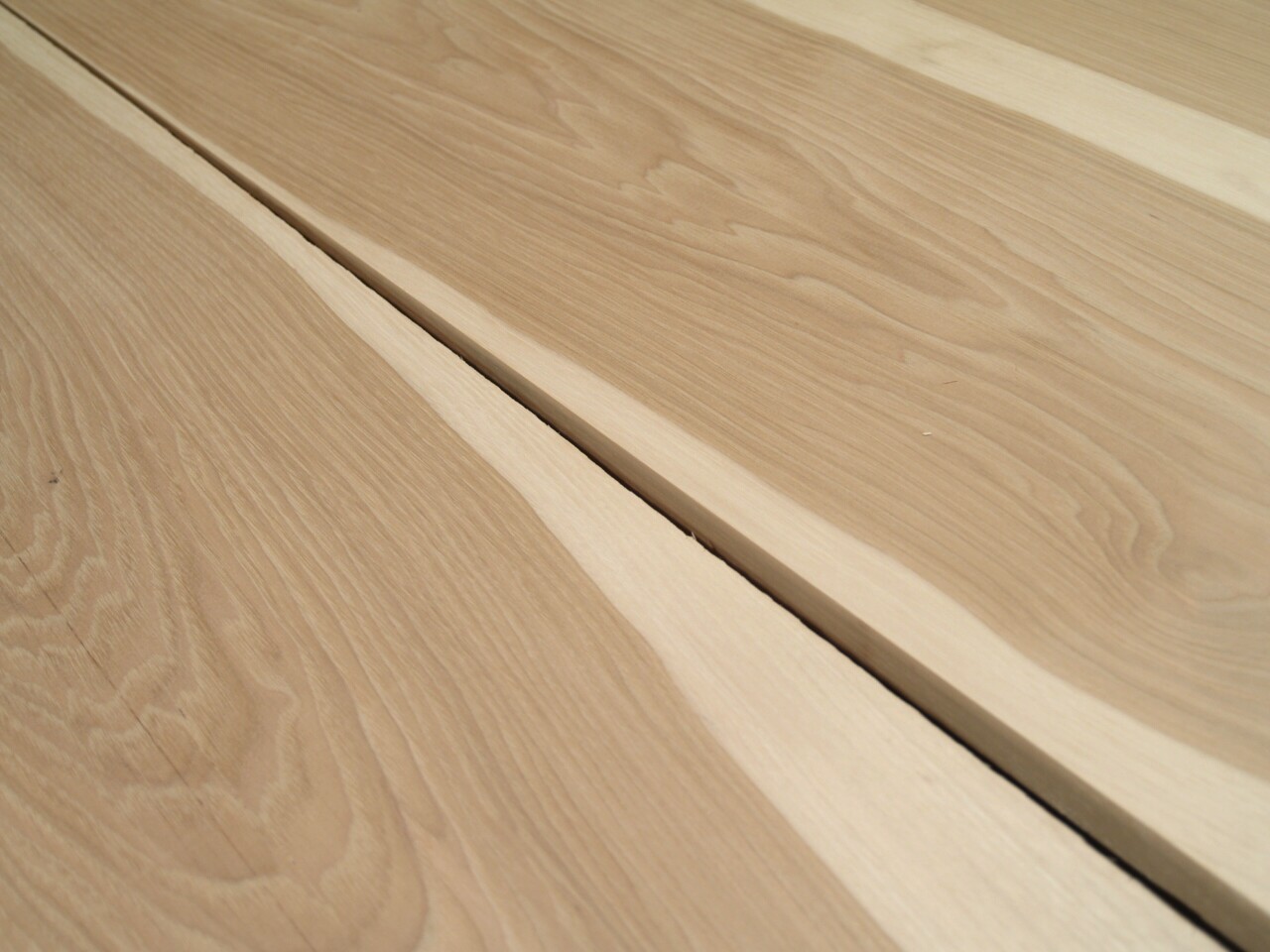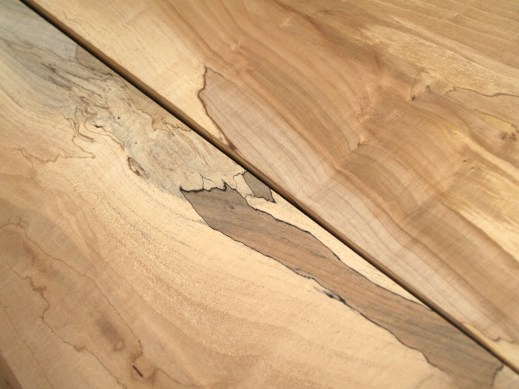I get a lot of questions about spalted wood and white woods. The main question I get about white woods is usually, “What white woods do you have?”
 They really are asking, “What species do you have that has a wide enough sap ring to produce white boards?” The customer usually ends up buying maple, but it starts a discussion about where white woods come from and what to look for in your purchases.
They really are asking, “What species do you have that has a wide enough sap ring to produce white boards?” The customer usually ends up buying maple, but it starts a discussion about where white woods come from and what to look for in your purchases.
Every tree has heartwood, which is the center of the tree and sapwood, which is the outer layer of the tree, just inside the bark. The sapwood is white. Sometimes it is tinted a little, (poplar, for example, is slightly green) but it is always very close to pure white. The heartwood is always darker. Sometimes, it is only a shade darker (basswood) and sometimes it is chocolate brown (walnut) or even black (persimmon). This sapwood layer is thin in some trees and very thick in others.
Lumber that we consider white woods will have a much thicker ring of sapwood when compared to lumber that you would normally think of as being darker. Here is the trick, the sapwood needs to be thick enough to produce a reasonable amount white lumber. This is very often the case in species such as maple, ash, and hickory.
In these trees, the sapwood is thick enough that we can use use it. In darker woods like walnut, cherry and oak the sapwood is usually only about and inch thick and is trimmed off like fat from a choice piece of meat. Within, the white woods it is possible to have a log that is almost entirely sapwood or a log that is almost all heartwood. It is most common that the white wood log is about half and half.
 Recognizing the sapwood layer is the key to understanding the defects that can happen to white woods. Typical defects in white woods are end stain, sticker stain and spalting (although this is typically considered a positive among furniture makers). Sapwood is a live layer of the tree and will degrade or decay.
Recognizing the sapwood layer is the key to understanding the defects that can happen to white woods. Typical defects in white woods are end stain, sticker stain and spalting (although this is typically considered a positive among furniture makers). Sapwood is a live layer of the tree and will degrade or decay.
I compare this layer to fresh produce. If exposed to hot and wet conditions the white wood will start to darken, then spalt (early rot) and then rot. In the same conditions, heartwood will not spalt and it will only very slowly rot. When purchasing white woods, pay attention to the color of the boards, especially if cut during the summer. If the logs are stored for a long period before cutting the ends will typically be darker. If the lumber is not dried quickly enough, it will have an overall darker color. And if it is dried on sticks that don’t allow for proper drying there could be sticker stains, which are dark stripes across the boards that very often do not plane out.
When shopping for spalted wood or looking to make your own, simply make sure that the log has a thick layer of sapwood, since this is the only area that will spalt. The maples spalt the best because of the sugar in them, but I have also seen good spalting in poplar, hickory and sycamore. I have even had some very nice spalted oak before, but again, this was only in the sap wood. All of the boards looked perfectly normal on the heartwood sides, except for some worm holes. Just remember white woods are sapwood and only sapwood spalts.






Have something to say? Share your thoughts with us in the comments below.